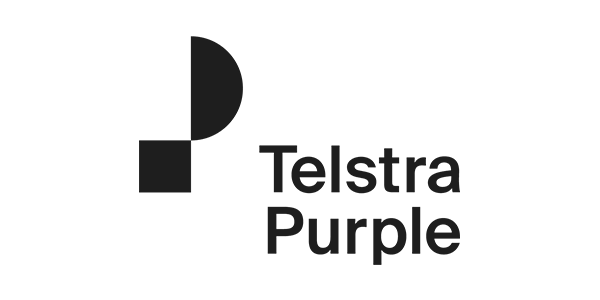What should I write my blog about?
In the final blog of our blog writing series, we wrap up by looking at choosing what to write about, and how to integrate storytelling techniques into your blogs to make them more compelling.
1. Blogging using the MECE approach
Do you prefer junk food or beautifully cooked meals? Food that lacks substance may make you feel better for a while, but you’ll get hungry fast. Blogs are like that. They need substance, which means they convey meaning and understanding.
One way to achieve deeper insight – and deliver better substance – on a topic is to use an analytical technique employed by some of the world’s biggest firms: MECE (Mutually Exclusive, Completely Exhaustive).
The idea behind MECE is to look at the challenge you want to solve and identify which parts of that problem are unique. Then you keep looking at each element of that challenge to define it.
For example: if you were writing about shoes, you might start this approach with the word “shoes”, then define men’s, women’s and children’s shoes, after which you might subdivide each of those groups into unique sub-groups (shoes that men and not women wear, for example, or even shoes for both).
The idea is that you keep on at your problem until you can identify every single mutually exclusive category that exists.
Why does the MECE approach help you write better blogs?
Because the process of doing this analysis gives you better, deeper insights into the topic. This should help you deliver deeply compelling writing that solves the immediate problem your reader wants to solve, and also provides insights they can use in future. Your analysis becomes knowledge that demonstrates your expertise.
Tip: Not only do you write articles with more inherent substance, but the MECE process also helps you identify topics to write about in future.

2. Better storytelling: use Freytag’s Pyramid
Another great tool for better writing, Freytag’s Pyramid is a storytelling structure widely used by screenwriters and dramatists. Developed in the 19th Century by German playwright, Gustav Freytag, it consists of seven story telling stages to make powerful stories. It works like this:
1. Exposition
The storyteller sets the scene and explains the background. “Once upon a time, Harry lived in Happy Valley with his cat.”
2. Inciting incident
Something happens, and the protagonist (main character) of the story reacts, generating a chain reaction of events. “But, Mike came to the valley and stole the cat, Harry set off in pursuit, He wanted revenge.”
3. Rising action
The story continues to unfold. Complications may emerge which make the initial problem harder to solve. “Harry’s mother revealed Mike to be his secret half-brother – how could he take vengeance now?”
4. Climax
The story reaches its point of greatest tension. This might be tension between two or more characters, for example. “The two men faced each other, both holding onto one of the cat’s legs.”
5. Falling action
As a result of the climax other actions take place. These may include actions taken by the main character as a result of the climax. “The cat scratched both men viciously, Mike lost his left eye. Harry laughed, but then felt guilty.”
6. Resolution
The problem that defined the story is solved. “They decided to share the cat, and Harry forgave Mike.”
7. Denouement
The ending. “They all lived happily ever after. Even the cat.”
Now, the illustrative example here may be a little trite, but it shows how Freytag’s Pyramid helps you tell better stories. It builds resonance and sympathy between your readers and your story, forging a relationship that urges readers to read on to find out what happens.
Combined with the deep analysis (and depth) of the MECE technique, Freytag’s Pyramid can help you write better blogs, screenplays, movies, case studies and more. Good stories encourage readers to believe in you. They can change your readers into brand evangelists.
3. How many words should you use in a blog post?
There are no hard rules on length. A few years ago, Google Search rewarded blogs that delivered 500-word articles or less. These days the search engine robots seem to favour lengthy (2,000-word or more) posts that go into great depth concerning a topic.
Those search engines use a whole range of considerations, which means even writing the longest post on a topic you’ve ever seen may not be enough, no matter how well-researched it happens to be. Forbes claims posts containing over 1,500 words gain 68% more Tweets than shorter pieces, and most search engines take social networking activity into account when ranking pieces.
Search engines also seek out keywords when ranking content, so there is an argument that longer pieces will yield more such words. However, the prevalence of ads means search engines also have a pretty good idea of how much reader attention (also known as “dwell time”) your report will gain. Factors like internal links, calls to action and links to relevant high ranked pages also help.
However, the most effective way to approach the problem of acquiring high quality search-based traffic is the same as it always has been: write great, deeply informative articles readers learn from, share and enjoy.
“Garbage in, garbage out,” as AI developers say. Don’t write garbage, and Google won’t put you in the search engine trash.
4. Conclude the article and have a call to action
Sum up what you have been saying at the end of your post. This is your chance to draw all your ideas together with a conclusion. This post, for example, has explained how effective writing techniques can help you build strong relationships with your readers by telling better stories and offering actionable insights.
Why did you ask your reader to read your article today? Many bloggers encourage readers to join a mailing list, follow them on social media, leave a comment or sign up to receive bonus content related to the article.
This is a call to action (CTA) and belongs at the end of your post. Just as the short and snappy sentence at the beginning of your piece helps draw your reader in, the call to action at the end also helps bring you and your reader closer together.
Why does this work? Writing is about building relationships, and if you have convinced someone to read your piece in its entirety, then they may want to show their appreciation. What better way to do so than to drop you a line, follow you on social media or make contact in some way? Next step, conversion.
Find out more
That is the end of our blogging series. We are writing an ebook delving further into the topic, which will be coming out in Q3. See our ebook on white paper writing for some ideas around writing effective long-form content.
If you want to read more about blogging now, check out the other two posts from the series Four great story structures for blog posts and 8 rules for better blog writing, and also our thoughts on the length of a blog.
Contact us at [email protected] if you like our experts to help you with your blogging program.

![Create the ideal white paper in eight weeks [infographic]](https://www.futuritymedia.com/wp-content/uploads/2020/02/Futurity-Whitepaper-Timeline-Graphic-v6-header.jpg)

![New to ABM? Follow these 5 steps to drive complex sales [UPDATED]](https://www.futuritymedia.com/wp-content/uploads/2023/04/shutterstock_1225782988.jpg)



















